Pedro Maldonado
PUBLICACIONES
ABSTRACT
Variations in human behavior correspond to the adaptation of the nervous system to different internal and environmental demands. Attention, a cognitive process for weighing environmental demands, changes over time. Pupillary activity, which is affected by fluctuating levels of cognitive processing, appears to identify neural dynamics that relate to different states of attention. In mice, for example, pupil dynamics directly correlate with brain state fluctuations. Although, in humans, alpha-band activity is associated with inhibitory processes in cortical networks during visual processing, and its amplitude is modulated by attention, conclusive evidence linking this narrowband activity to pupil changes in time remains sparse. We hypothesize that, as alpha activity and pupil diameter indicate attentional variations over time, these two measures should be comodulated. In this work, we recorded the electroencephalographic (EEG) and pupillary activity of 16 human subjects who had their eyes fixed on a gray screen for 1 min. Our study revealed that the alpha-band amplitude and the high-frequency component of the pupil diameter covariate spontaneously. Specifically, the maximum alpha-band amplitude was observed to occur ∼300 ms before the peak of the pupil diameter. In contrast, the minimum alpha-band amplitude was noted to occur ∼350 ms before the trough of the pupil diameter. The consistent temporal coincidence of these two measurements strongly suggests that the subject’s state of attention, as indicated by the EEG alpha amplitude, is changing moment to moment and can be monitored by measuring EEG together with the diameter pupil.
[:]ABSTRACT
Hippocampal-dependent memories emerge late during postnatal development, aligning with hippocampal maturation. During sleep, the two-stage memory formation model states that through hippocampal-neocortical interactions, cortical slow-oscillations (SO), thalamocortical Spindles, and hippocampal sharp-wave ripples (SWR) are synchronized, allowing for the consolidation of hippocampal-dependent memories. However, evidence supporting this hypothesis during development is still lacking. Therefore, we performed successive object-in-place tests during a window of memory emergence and recorded in vivo the occurrence of SO, Spindles, and SWR during sleep, immediately after the memory encoding stage of the task. We found that hippocampal-dependent memory emerges at the end of the 4th postnatal week independently of task overtraining. Furthermore, we observed that those animals with better performance in the memory task had increased Spindle density and duration and lower density of SWR. Moreover, we observed changes in the SO-Spindle and Spindle-SWR temporal-coupling during this developmental period. Our results provide new evidence for the onset of hippocampal-dependent memory and its relationship to the oscillatory phenomenon occurring during sleep that helps us understand how memory consolidation models fit into the early stages of postnatal development.
[:]ABSTRACT
It is widely accepted that the brain, like any other physical system, is subjected to physical constraints that restrict its operation. The brain's metabolic demands are particularly critical for proper neuronal function, but the impact of these constraints continues to remain poorly understood. Detailed single-neuron models are recently integrating metabolic constraints, but these models’ computational resources make it challenging to explore the dynamics of extended neural networks, which are governed by such constraints. Thus, there is a need for a simplified neuron model that incorporates metabolic activity and allows us to explore the dynamics of neural networks. This work introduces an energy-dependent leaky integrate-and-fire (EDLIF) neuronal model extension to account for the effects of metabolic constraints on the single-neuron behavior. This simple, energy-dependent model could describe the relationship between the average firing rate and the Adenosine triphosphate (ATP) cost as well as replicate a neuron's behavior under a clinical setting such as amyotrophic lateral sclerosis (ALS). Additionally, EDLIF model showed better performance in predicting real spike trains – in the sense of spike coincidence measure – than the classical leaky integrate-and-fire (LIF) model. The simplicity of the energy-dependent model presented here makes it computationally efficient and, thus, suitable for studying the dynamics of large neural networks.
[:]ABSTRACT
In natural vision, neuronal responses to visual stimuli occur due to self-initiated eye movements. Here, we compare single-unit activity in the primary visual cortex (V1) of non-human primates to flashed natural scenes (passive vision condition) to when they freely explore the images by self-initiated eye movements (active vision condition). Active vision enhances the number of neurons responding, and the response latencies become shorter and less variable across neurons. The increased responsiveness and shortened latency during active vision were not explained by increased visual contrast. While the neuronal activities in all layers of V1 show enhanced responsiveness and shortened latency, a significant increase in lifetime sparseness during active vision is observed only in the supragranular layer. These findings demonstrate that the neuronal responses become more distinct in active vision than passive vision, interpreted as consequences of top-down predictive mechanisms.
[:]ABSTRACT
In Chap. 11, Pedro Maldonado describes his joint work with his PhD advisor, George Gerstein, demonstrating plasticity in receptive field properties, neuronal interactions, and network dynamics in the rat auditory cortex upon electrical intracortical microstimulation.
[:]ABSTRACT
It is still elusive to explain the emergence of behavior and understanding based on its neural mechanisms. One renowned proposal is the Free Energy Principle (FEP), which uses an information-theoretic framework derived from thermodynamic considerations to describe how behavior and understanding emerge. FEP starts from a whole-organism approach, based on mental states and phenomena, mapping them into the neuronal substrate. An alternative approach, the Energy Homeostasis Principle (EHP), initiates a similar explanatory effort but starts from single-neuron phenomena and builds up to whole-organism behavior and understanding. In this work, we further develop the EHP as a distinct but complementary vision to FEP and try to explain how behavior and understanding would emerge from the local requirements of the neurons. Based on EHP and a strict naturalist approach that sees living beings as physical and deterministic systems, we explain scenarios where learning would emerge without the need for volition or goals. Given these starting points, we state several considerations of how we see the nervous system, particularly the role of the function, purpose, and conception of goal-oriented behavior. We problematize these conceptions, giving an alternative teleology-free framework in which behavior and, ultimately, understanding would still emerge. We reinterpret neural processing by explaining basic learning scenarios up to simple anticipatory behavior. Finally, we end the article with an evolutionary perspective of how this non-goal-oriented behavior appeared. We acknowledge that our proposal, in its current form, is still far from explaining the emergence of understanding. Nonetheless, we set the ground for an alternative neuron-based framework to ultimately explain understanding.
[:]A great deal of research has examined the efficacy of variable message signs (VMS) to induce driver behavior changes, improve safety conditions, and decongest the traffic network. However, there is little literature regarding the most effective ways to display this information on VMS. Furthermore, none of the previous contributions have concentrated on analyzing what impact flashing VMS have on drivers by using real traffic data. This article seeks to bridge this gap, analyzing the effect of incorporating intermittent light stimulation to messages on drivers’ behavior on a Chilean highway, using vehicle-by-vehicle data obtained in a non-intrusive way. In order to do so, an experiment was carried out to measure the responses of drivers when faced with two types of messages: (1) those intended to induce a speed reduction and (2) those aimed at generating lane changes. From the statistical models we obtained several insights. Our results show that flashing messages may increase the effectiveness of VMS depending on environmental and traffic conditions. In particular, for speed moderation messages, we found 12 significant effects, showing, for example, that a flashing message is most effective in the hours of darkness, with low congestion, small spacing, and low average speeds. Additionally, it has a more significant impact on experienced drivers. On the other hand, for lane change messages, we found five significant effects, showing that flashing messaging reduces its effectiveness in situations where a high cognitive load is required, such as in high flow and high average speeds. No particular effects were identified in either case for specific vehicle types.
[:]ABSTRACT
The ability of an organism to voluntarily control the stimuli onset modulates perceptual and attentional functions. Since stimulus encoding is an essential component of working memory (WM), we conjectured that controlling the initiation of the perceptual process would positively modulate WM. To corroborate this proposition, we tested twenty-five healthy subjects in a modified-Sternberg WM task under three stimuli presentation conditions: an automatic presentation of the stimuli, a self-initiated presentation of the stimuli (through a button press), and a self-initiated presentation with random-delay stimuli onset. Concurrently, we recorded the subjects' electroencephalographic signals during WM encoding. We found that the self-initiated condition was associated with better WM accuracy, and earlier latencies of N1, P2 and P3 evoked potential components representing visual, attentional and mental review of the stimuli processes, respectively. Our work demonstrates that self-initiated stimuli enhance WM performance and accelerate early visual and attentional processes deployed during WM encoding. We also found that self-initiated stimuli correlate with an increased attentional state compared to the other two conditions, suggesting a role for temporal stimuli predictability. Our study remarks on the relevance of self-control of the stimuli onset in sensory, attentional and memory updating processing for WM.

Vicuña Mackenna 4860
Macul, Chile



